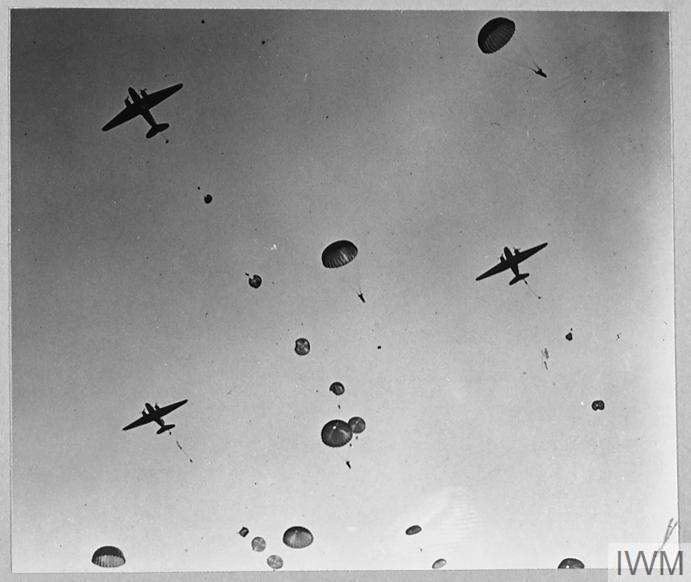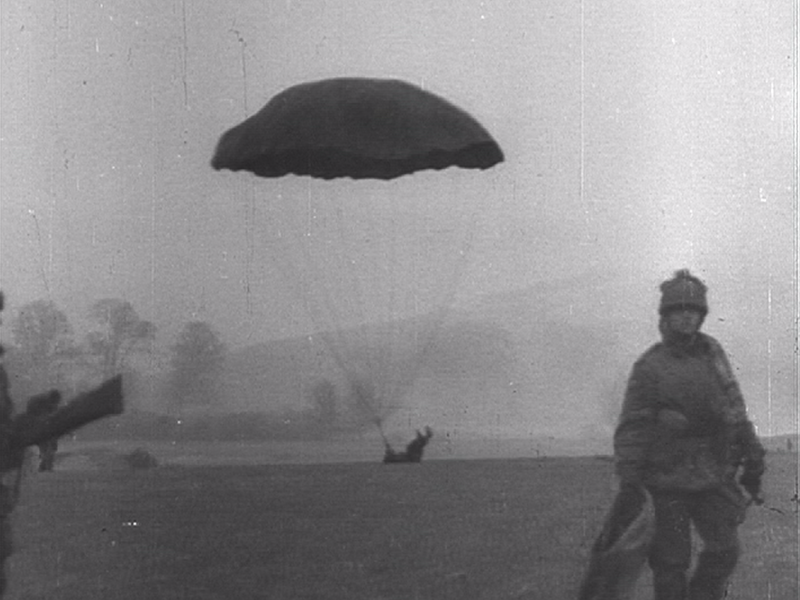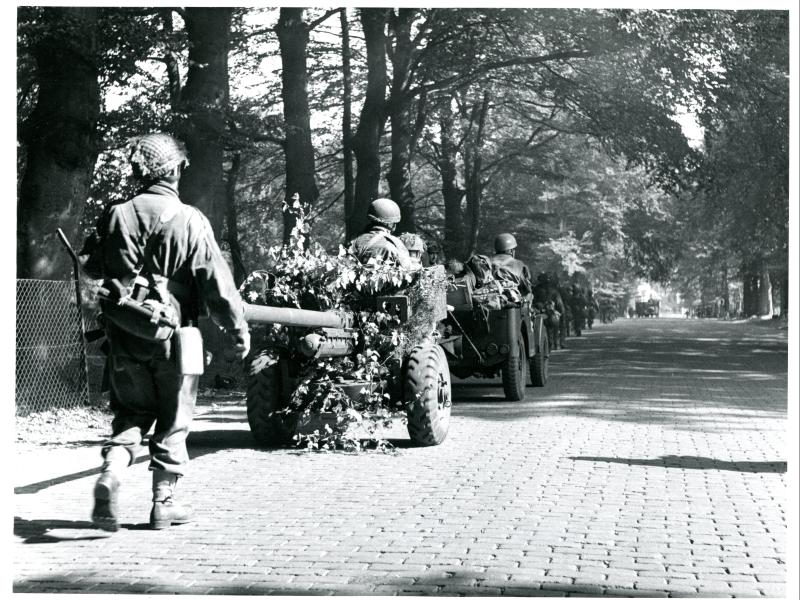Exercise JOHNNY, 20/21 March 1944
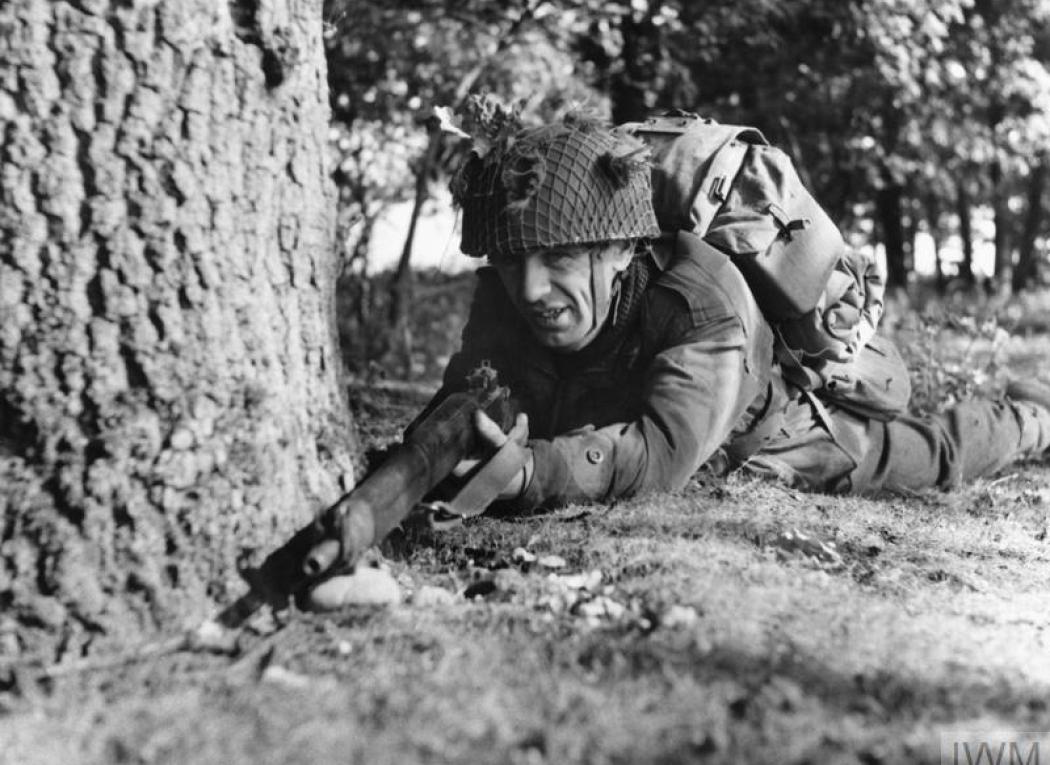
Note:
The War Office base map used in this document is Sheet 55 (Grantham) of the England and Wales One-Inch Popular Series, GSGS 3907 - 1933-43, and is reproduced with the permission of the National Library of Scotland. It can be accessed online here: Map Sheet 55 Grantham of the wartime military Ordnance Survey series
Exercise JOHNNY was conducted by the 1st Parachute Brigade on 20/21 March 1944 to practise Brigade units in conducting a night attack with artillery support.
The initial plan called for some of the participating units to fly in 55 aircraft of the US 61st Troop Carrier Group (Barkston Heath airfield) and 313th Troop Carrier Group (Folkingham airfield), plus two British aircraft from the RAF’s No 38 Group. They would land by parachute on the dropzone (DZ) at Ropsley Heath before making their way to a concentration area. The units parachuting would be:
- 3rd Parachute Battalion
- 16th (Parachute) Field Ambulance, Royal Army Medical Corps (RAMC)
- 1st Parachute Squadron, Royal Engineers (RE), after a drop conducting their own exercise
- 21st Independent Parachute Company (Pathfinders)
- Parachute Platoon, Royal Army Service Corps (RASC)
The following units would not parachute into the exercise area but would travel to the DZ by motor transport:
- 1st Parachute Battalion
- 2nd Parachute Battalion
- 1st Airlanding Anti-Tank Battery, Royal Artillery (RA)
- Forward Observation parties from 1st Airlanding Light Regiment, RA
- Forward Observation parties from Second Army
However, the planned parachute drops did not take place and units were moved instead by motor transport.
Each man was to be issued with one 24-hour ration pack. Each member of the ‘friendly’ forces would be issued with 10 rounds of blank ammunition, and each of the ‘enemy’ with 25 rounds. The planned small amount of blank ammunition suggests that the aim of the exercise was to practise procedures under harassing rather than heavy enemy fire.
All troops were to dig in as they would on operations, but emphasis was placed on minimizing damage to land and property, so trenches were to be dug into hedgerows whenever possible and filled in before the end of the exercise. In addition, vehicles were instructed not to move across cultivated fields.
‘Enemy’ forces would be played by men of the 1st Airlanding Reconnaissance Squadron, and they would wear berets instead of steel helmets. ‘Friendly’ forces would wear steel helmets and denim overalls over their battledress uniforms. Each enemy vehicle would fly a red flag as high as possible above it.
THE REALITY
Exercise JOHNNY was one of two tactical exercises in March 1944 originally planned as Brigade exercises, the other being Exercise WILLIAM. Both exercises seem to have been scaled down by the time they took place. In his book, Arnhem 1944, historian Dr William Buckingham says of these exercises:
1st Parachute Brigade conducted two tactical exercises, codenamed ‘Johnny’ and ‘William’, during March 1944. Both appear to have been company-sized two or three-day affairs, given that the Brigade Training Summary for March records that the Brigade had conducted platoon and company training for the whole of the month.2
Of the units originally planned to participate in Exercise JOHNNY, there is no mention of it in the War Diaries of the 1st Parachute Squadron RE or the 21st Independent Parachute Company (Pathfinders). Of the RASC units planned to participate, no mention of it is made in the War Diary of the 250th Airborne Light Composite Company, but the War Diary of the 93rd Airborne Divisional Composite Company records that 11 vehicles proceeded on the exercise.
Although official unit records vary in the level of detail they contain about Exercise JOHNNY, it is possible to gain an insight into the experiences of some units involved.
See the maps below for the moves that the 1st, 2nd and 3rd Parachute Battalions planned to make in response to the exercise scenario.
- 2
Buckingham, W. F., 2004. Arnhem 1944. Stroud: Tempus Publishing Limited, pp. 41-42.
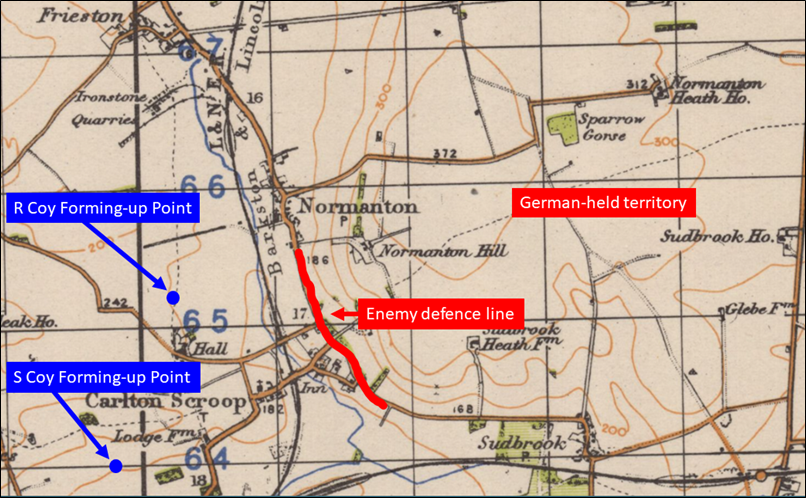
R Company and S Company Forming-Up Points (FUPs) near Carlton Scroop.
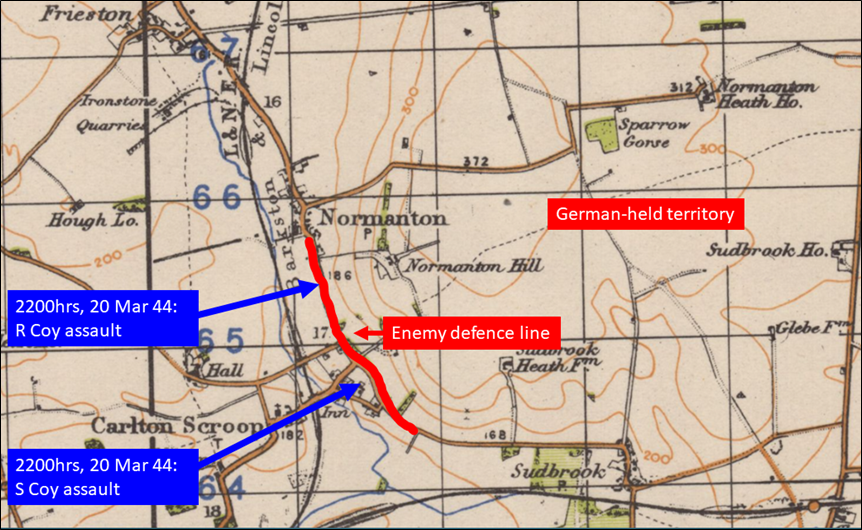
The planned assault on the enemy line by 'R' and 'S' Companies at 2200 hrs, 20 March 1944.
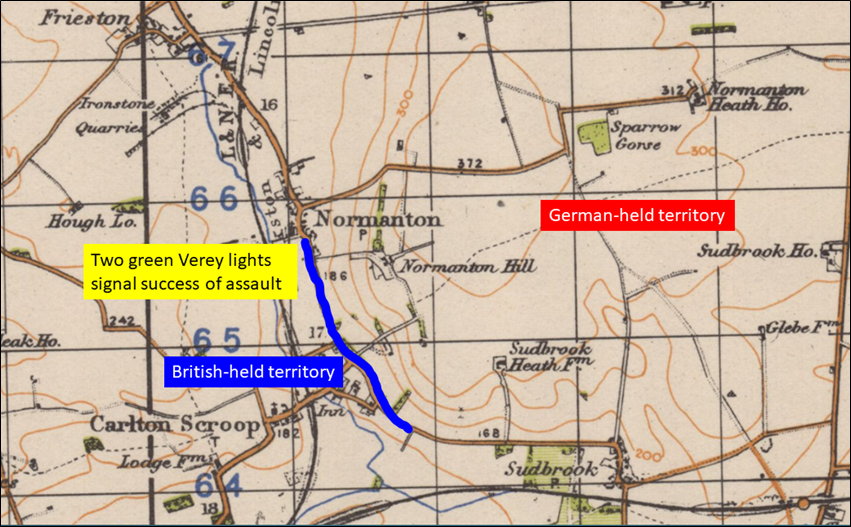
Two green Verey lights would signal the success of the assault.

The 2nd and 3rd Battalions would pass through the positions of the 1st Battalion.
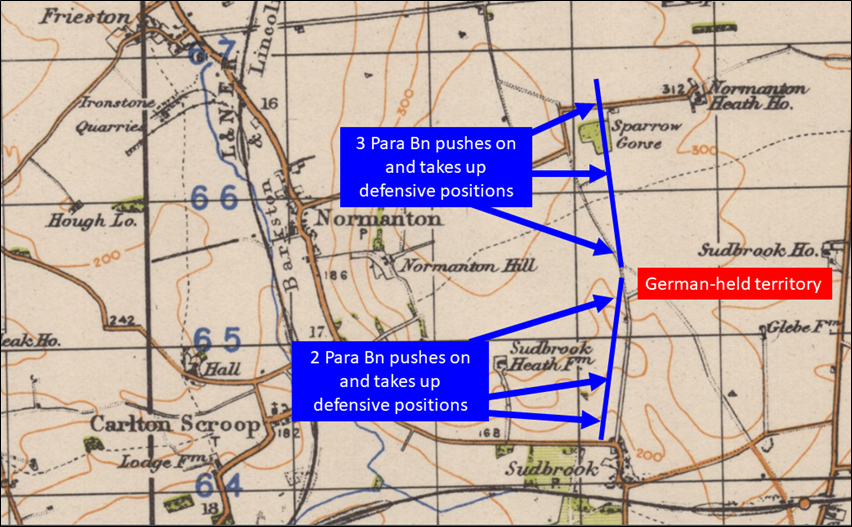
The 2nd and 3rd Battalions would take up defensive positions.
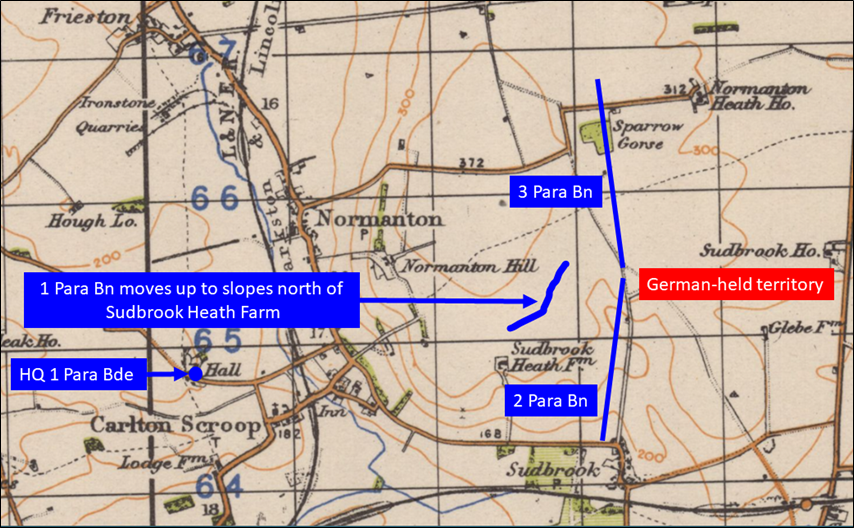
The 1st Battalion would move up to consolidate the captured position.
1st Parachute Battalion 3
The War Diary of the 1st Parachute Battalion does not record the events of the exercise but does include the intention and method to be used by the 1st, 2nd and 3rd Parachute Battalions for their attack during the night of 20/21 March 1944.
The 1st Battalion was to conduct an attack at night on an enemy-held line close to the village of Normanton in Lincolnshire. After successfully capturing this line, the 2nd and 3rd Battalions would pass through the positions of the 1st Battalion, fan out and secure the high ground to the east of the village. They would then dig in and consolidate their positions. Two anti-tank guns from the 1st Airlanding Anti-Tank Battery would be sited in the 3rd Battalion positions to increase overall anti-tank capabilities. Once the 2nd and 3rd Battalions had secured the high ground, the 1st Battalion would move up behind them, dig in and consolidate its position.
2nd Parachute Battalion 4
The War Diary of the 2nd Parachute Battalion provides sufficient information for a reconstruction of the Battalion’s movements during Exercise JOHNNY.
Early in the morning of 20 March 1944, commanders of units within 1st Parachute Brigade – including those of 2nd Parachute Battalion - were on the ground close to Marston village, north of Grantham, to perform a reconnaissance, then plan and issue orders for the day’s activities.
The main body of the 2nd Parachute Battalion formed up close to the bridge where the London & North Eastern Railway line crossed the Great North Road in the northern outskirts of Grantham. This was the Brigade’s convoy Start Point. At 1100 hrs on 20 March 1944, the Battalion’s vehicles departed the Start Point and drove to Marston at 20 mph. By 1205 hrs, the Battalion’s companies had debussed in Marston village.
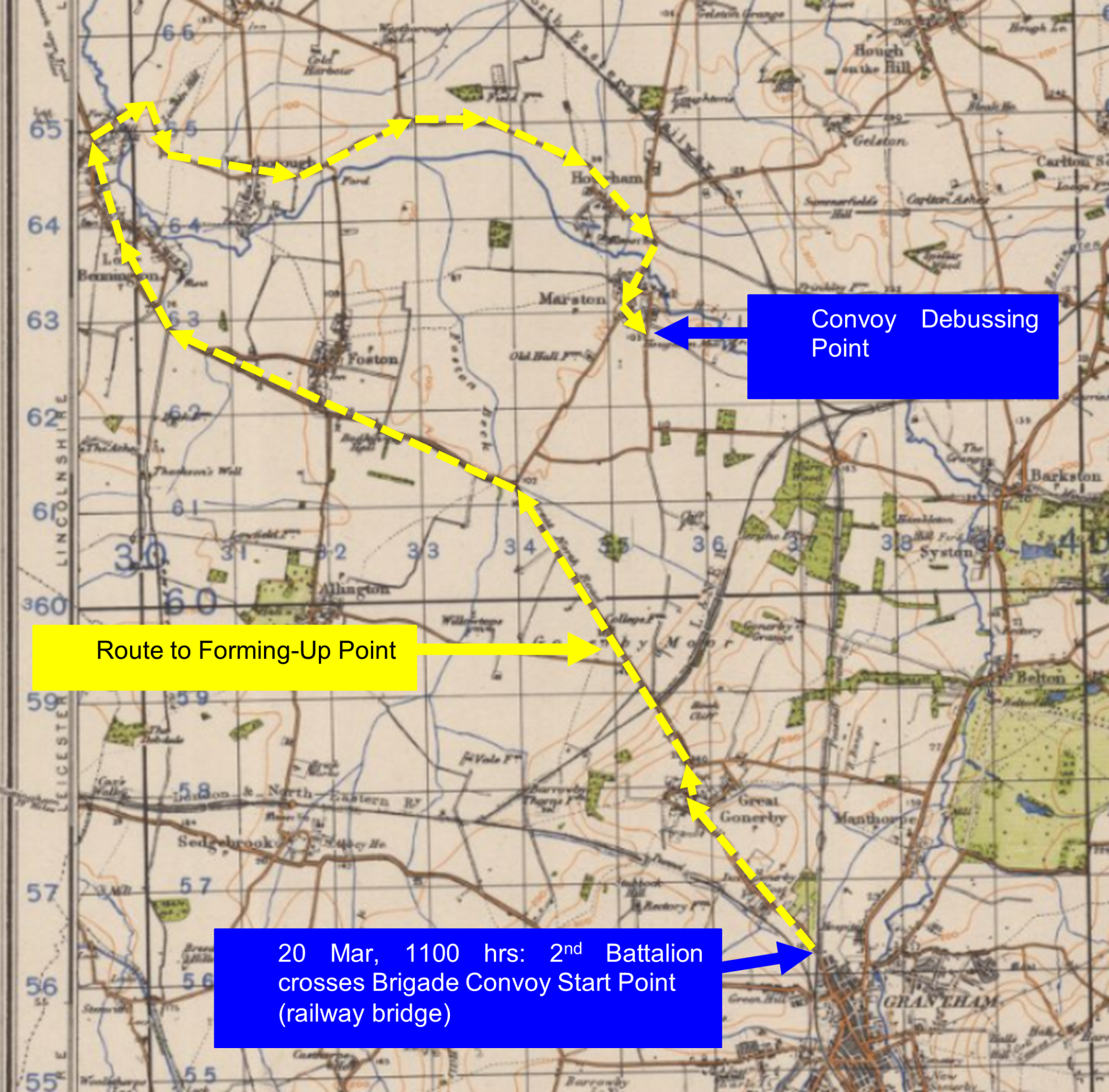
Convoy route of 2nd Parachute Battalion from Grantham to its debussing point at Marston
One platoon from C Company moved up to the Hall in the village of Carlton Scroop at 1830 hrs, ready to act as guides for the rest of the Battalion for the night attack. At 2045 hrs, the remainder of the 2nd Battalion set off for the night attack Forming-Up Point, also located in Carlton Scroop, and arrived at 2230 hrs.
At 2330 hrs, the Battalion set off towards its objective, the enemy-held Sudbrook Heath Farm, with A Company in the lead. It followed a guide from C Company to a road junction and then followed a white tape which had been laid across country towards the objective. Enemy opposition was met from high ground on route but was quickly cleared by A Company before they continued towards the Farm.
'A' Company attacked and captured Sudbrook Heath Farm at 0015 hrs on 21 March 1944, and took up positions in and around the Farm. The remaining Companies passed by the Farm to take up positions to the east of it. By 0330 hrs, all units of the Battalion were in their allocated positions and were digging in to repel any enemy counterattacks.
At 0540 hrs, the Battalion was ‘stood to’, i.e. all troops took up alert defensive positions. It is normal practice for troops to ‘stand to’ before dawn and at dusk because these are the times of the day when attacks are most likely. Well-concealed defenders in static positions are normally difficult to see and they have an advantage over attacking forces. However, the half-light around dawn and dusk reduces this advantage because the human eye has difficulty adjusting to the changing conditions, and it is particularly difficult for it to distinguish movement. Enemy troops can more easily manoeuvre into attacking positions without being spotted by the defenders. A stand-to is normally in force until the lighting condition has stabilized, i.e. it is fully daylight or fully dark, and the human eye has become adjusted to it. For Exercise JOHNNY, the stand-to was in force until 0640 hrs, when the troops were ordered to stand down and individual sentries would provide warning of enemy movements.
At 0845 hrs on 21 March 1944, Exercise JOHNNY ended. At 1000 hrs, motor transport began moving all units of the Battalion back to their billets, where they arrived at 1100 hrs. There are no further entries in the 2nd Battalion War Diary for 21 March 1944, and it is assumed that the rest of the day was spent unpacking, cleaning kit and resting.
See below for maps following the actions of the 2nd Parachute Battalion during the exercise.
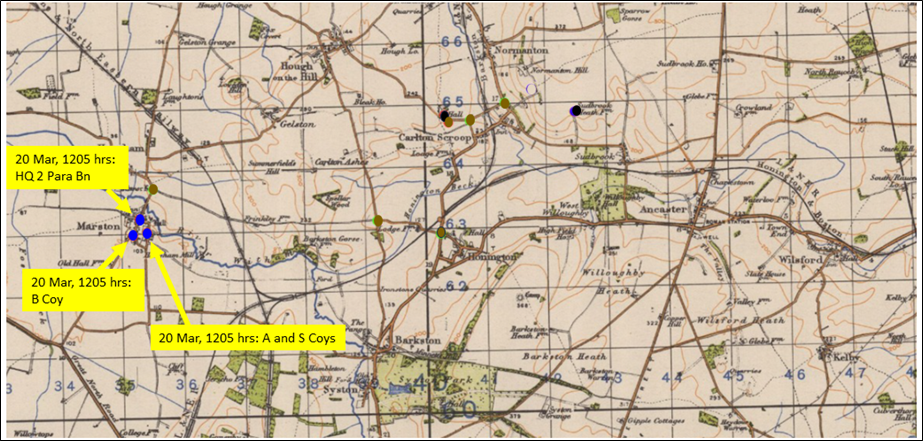
20 March 1944, 1205 hrs: Starting Positions of 2nd Parachute Battalion for Exercise JOHNNY
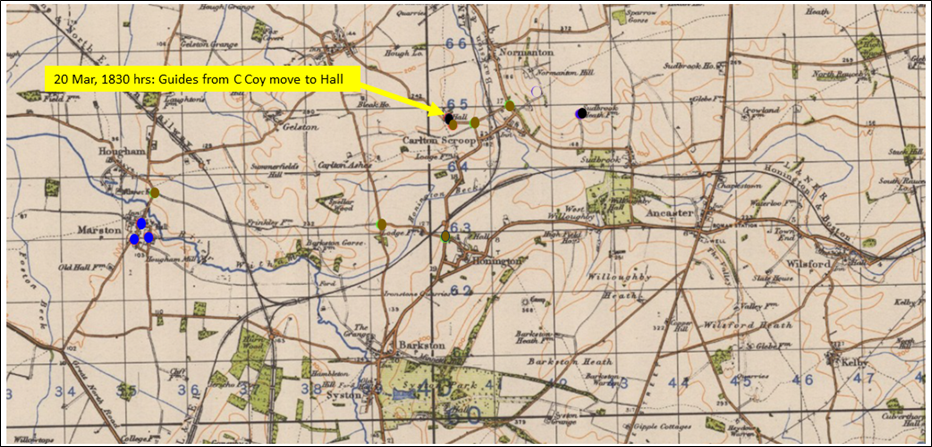
20 March 1944, 1830hrs: Platoon from C Company moves to Hall at Carlton Scroop to act as Battalion guides
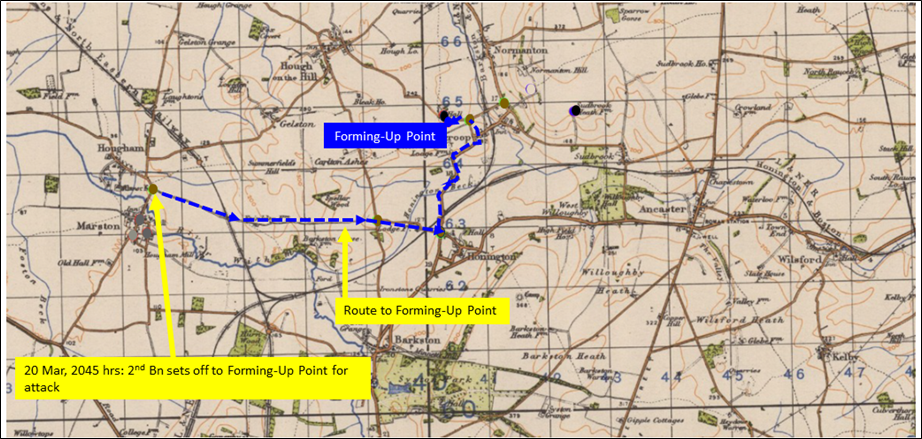
20 March 1944, 2045 hrs: 2nd Battalion sets off to Forming-Up Point for attack
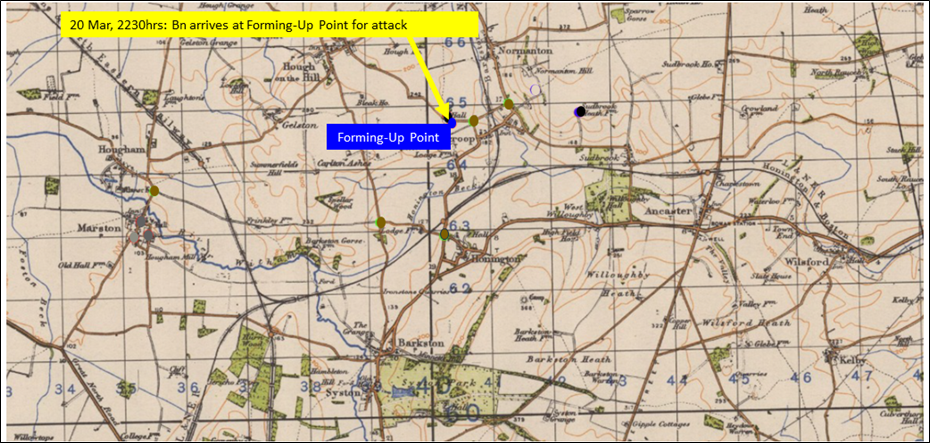
20 March 1944, 2230hrs: 2nd Battalion arrives at Forming-Up Point for attack
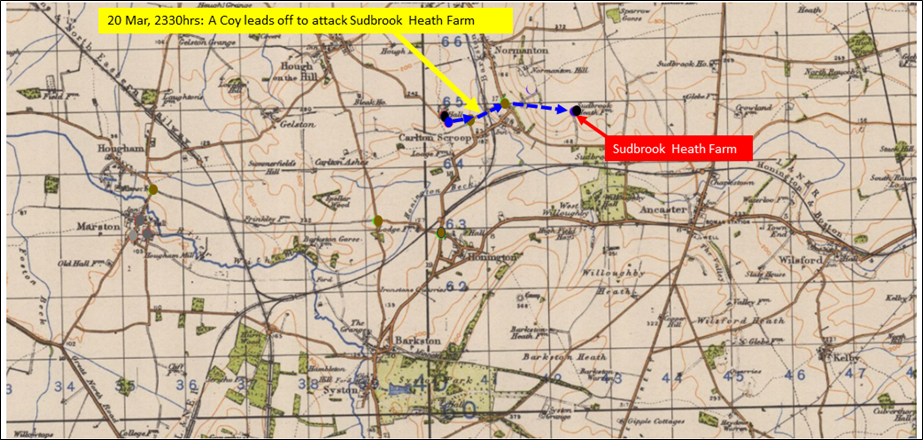
20 March 1944, 2330 hrs: 'A' Company leads 2nd Battalion to attack Sudbrook Heath Farm; it follows a guide to a road junction, then a white tape across country towards the Farm

‘A’ Company encounters enemy opposition on route to the Farm, clears it then continues towards the Farm

21 March 1944, 0015 hrs: ‘A’ Company captures Sudbrook Heath Farm
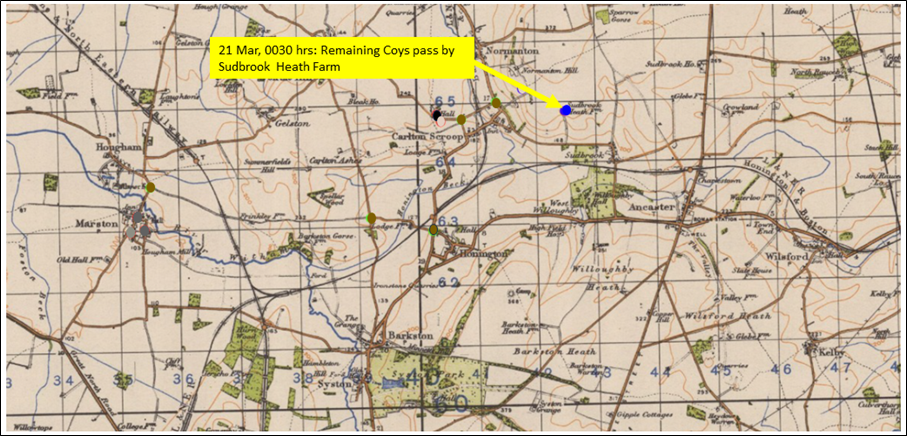
21 March 1944, 0030 hrs: Remaining Companies of 2nd Battalion pass by Sudbrook Heath Farm

21 March 1944, 0100 hrs: Battalion HQ, ‘A’ and ‘S’ Companies in position in and around Sudbrook Heath Farm; ‘B’ and ‘C’ Companies moving into positions to the east
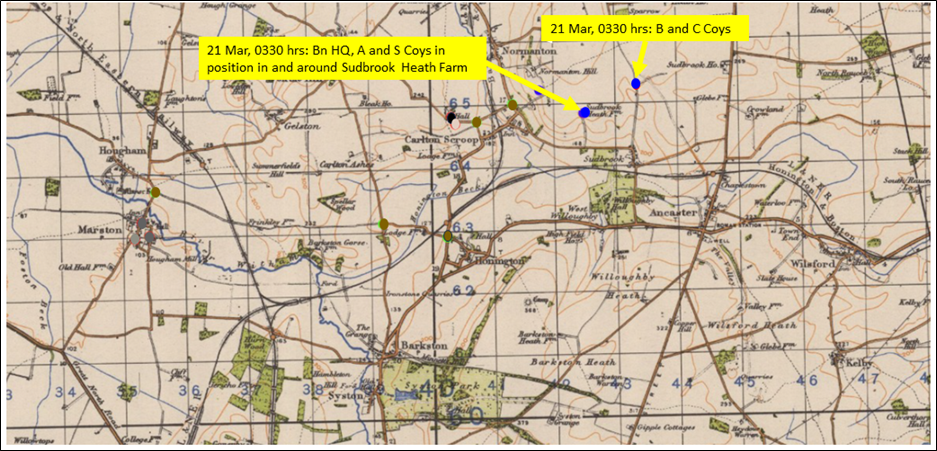
21 March 1944, 0330 hrs: All units of the Battalion in position and digging in
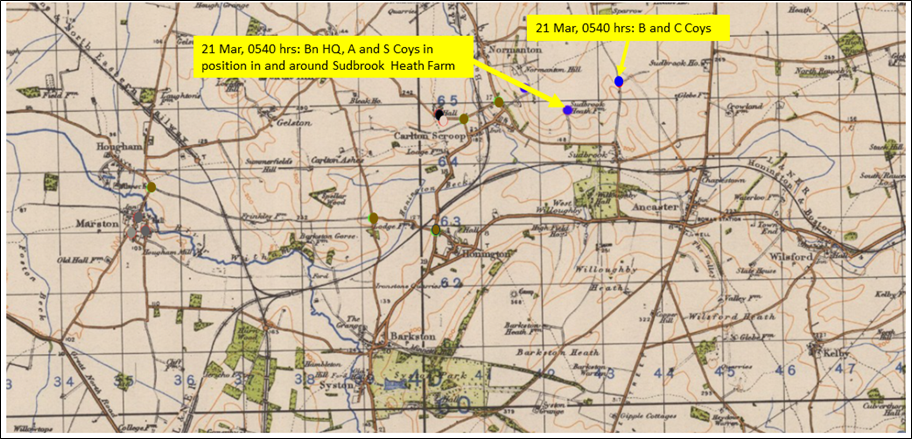
21 March 1944, 0540 hrs: All units of the Battalion stand to

21 March 1944, 0640 hrs: All units of the Battalion stand down; 0845 hrs: Ex JOHNNY ends and all units return in vehicles to their barrack areas at 1000 hrs
3rd Parachute Battalion 5
There is only one entry for the exercise in the War Diary of the 3rd Parachute Battalion:
20th) Exercise JOHNNY area NORMANTON (4165 sheet 1” 55.)
21st)
16th Parachute Field Ambulance, Royal Army Medical Corps 6
The War Diary of the 16th Parachute Field ambulance indicates that the unit occupied a village school (location not stated but possibly in Marston village) shortly before dusk. A Main Dressing Station (MDS) was set up in the school and medical sections were attached to each of the three parachute battalions.
The War Diary records that the medical aspects of the exercise were considered satisfactory. ‘Casualties’ were transferred to the MDS in good time, despite the challenges of an extremely dark and wet night. Perhaps the most popular aspect of the medics’ work that night was the issue of a rum ration to the Brigade!
Acknowledgements
Richard Chancellor, Aviation historian and USAAF research specialist.
Mark Hickman, Creator of the website, The Pegasus Archive, British Airborne Forces 1940-1945. Website: https://www.pegasusarchive.org/
Colonel Mark Vlahos, USAF Retired, Historian and author of Men Will Come, A History of the 314th Troop Carrier Group, 1942-1945. Website: https://markcvlahos.com/
